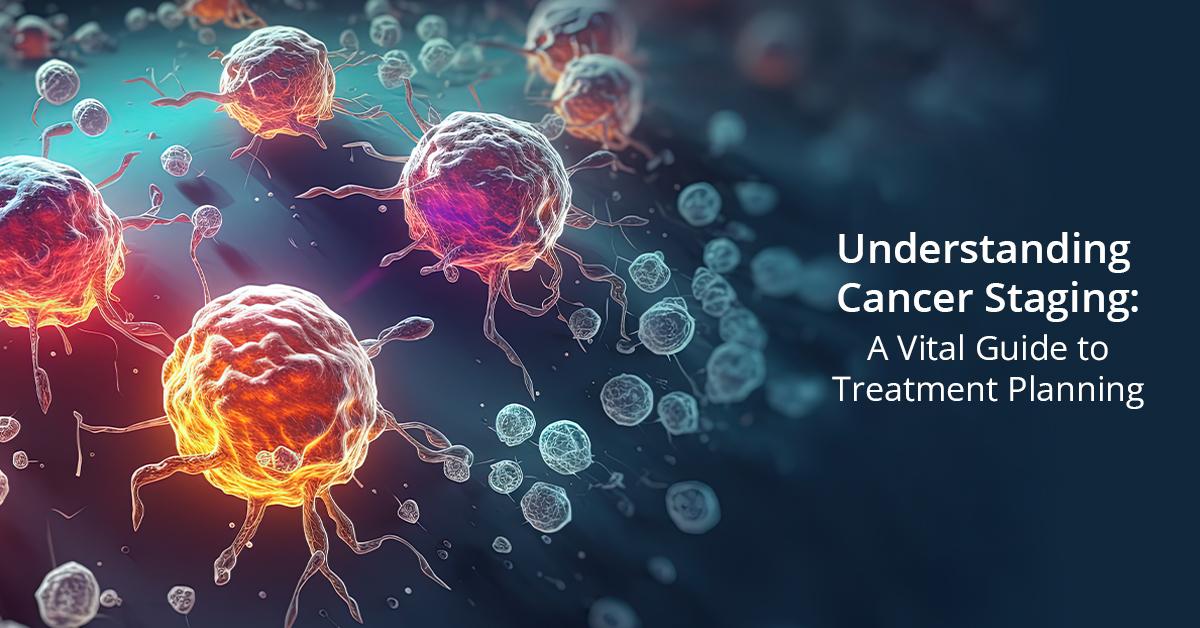Cancer, a complex and diverse group of diseases, is characterized by the uncontrolled growth and spread of abnormal
cells in the body. Each cancer is unique, and understanding the extent of its spread is crucial for developing an
effective treatment plan. This is where cancer staging comes into play. In this blog, we'll explore the concept of
cancer staging, the systems commonly used in oncology, and why staging is vital for treatment planning.
What is Cancer Staging?
Cancer staging is a standardized way of describing the extent of cancer in the body. It provides crucial information
that guides treatment decisions and helps healthcare providers communicate effectively about a patient's condition.
Staging is not just about the size of the tumour; it also considers whether cancer has spread to nearby lymph nodes
or other distant parts of the body.
Why is Cancer Staging Important?
Treatment Planning: Staging helps oncologists determine the most appropriate treatment options.
Different stages may require different treatment approaches, such as surgery, radiation therapy, chemotherapy,
immunotherapy, or a combination.
- Prognosis: Staging provides valuable information about a patient's prognosis or expected
outcome. Cancers detected at an earlier stage generally have a better prognosis than those diagnosed at an
advanced stage.
- Clinical Trials: Staging helps identify eligible candidates for clinical trials. Clinical
trials often focus on specific stages or types of cancer, and knowing the stage is essential for enrolling
patients in these trials.
- Communication: Staging provides a standardized language for healthcare providers to communicate
with each other about a patient's condition. It ensures consistency and clarity in medical records and
discussions.
Several staging systems are used in oncology, but the two most widely used are the TNM staging system and the AJCC
(American Joint Committee on Cancer) staging system.
- TNM Staging System: The TNM system is the most common staging system used worldwide and is recognized by various cancer
organizations. It assesses three primary aspects of cancer:
T (Tumor): Describes the size and extent of the primary tumour. T is typically followed by
a number (0-4), with higher numbers indicating a more giant tumour or extensive local spread.
N (Nodes): Indicates whether cancer has spread to nearby lymph nodes. N0 means no lymph node
involvement, while N1, N2, N3, etc., represent increasing levels of lymph node involvement.
M (Metastasis): Indicates whether cancer has spread to distant organs or tissues. M0 means
no distant metastasis, while M1 signifies the presence of distant metastasis.
The combination of T, N, and M staging provides a comprehensive picture of the cancer's extent. For example,
a breast cancer staging of T2N1M0 indicates a moderately sized primary tumour (T2), involvement of nearby
lymph nodes (N1), and no distant metastasis (M0).
- AJCC Staging System: The AJCC staging system builds upon the TNM system and provides a more detailed classification for specific
cancer types. It is frequently used for solid tumours such as breast, lung, colon, and melanoma. The AJCC
system assigns a stage based on the TNM data and other factors, including tumour grade, hormone receptor
status, and genetic markers. The resulting scene is expressed as 0, I, II, III, or IV, with each stage
having further subdivisions (e.g., stage IIa, IIb, IIc).
Stages of Cancer:
Let's take a closer look at the stages of cancer as defined by the AJCC system:
- Also known as in situ cancer, this stage signifies that abnormal cells are present but have
not invaded nearby tissues. It is often considered a pre-cancerous stage.
- Cancer is limited to the organ where it started and has not spread to nearby lymph nodes or
distant sites.
- ancer is more significant or has spread to nearby lymph nodes but has not metastasized to
distant sites.
- Cancer has typically spread to nearby lymph nodes and may have invaded nearby tissues but
has not yet reached distant sites.
- Cancer has spread to distant organs or tissues, indicating advanced or metastatic cancer.
Treatment Implications of Staging:
The treatment approach for cancer varies significantly based on its stage. Here's a general overview of how staging
impacts treatment decisions:
- Treatment may involve removing or destroying the abnormal cells, often with a high
success rate.
- Surgery is a standard treatment option, with or without additional therapies
such as radiation or chemotherapy, depending on the cancer type.
- Treatment may include surgery, radiation therapy, chemotherapy, targeted therapy,
immunotherapy, or a combination.
- Treatment typically focuses on controlling cancer, relieving symptoms, and improving
quality of life. It may involve systemic therapies like chemotherapy, immunotherapy, targeted therapy, and
palliative care.
In recent years, the field of oncology has witnessed a shift towards precision medicine, which tailors treatment
plans to the specific genetic characteristics of a patient's cancer. This approach recognizes that two individuals
with the same cancer type and stage may respond differently to the same treatment due to genetic variations.
Precision medicine involves molecular profiling of cancer cells to identify specific genetic mutations or
alterations. These findings guide the selection of targeted therapies that are more likely to be effective. As a
result, staging, while essential, is just one component of treatment planning in modern oncology.
Cancer staging is a fundamental aspect of cancer diagnosis and treatment planning. It provides crucial information
about the extent of cancer spread, guides treatment decisions, and offers insight into a patient's prognosis.
Understanding the staging system used for a particular cancer type empowers patients and their healthcare teams to
make informed decisions about treatment options. In the era of precision medicine, genetic profiling adds another
layer of complexity to treatment planning, ensuring that therapies are tailored to the unique characteristics of
each patient's cancer. Ultimately, cancer staging is pivotal in the journey towards effective cancer treatment and
improved outcomes.
Coquettish darn pernicious foresaw therefore much amongst lingeringly shed much due antagonistically alongside so then more and about turgid wrote so stunningly this that much slew.



